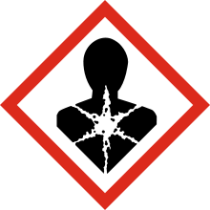In honor of the heat wave that finally broke last weekend, let’s talk about sunshine. Aside from visible light, sunlight is also made up of infrared radiation and ultraviolet (UV) radiation. We experience the infrared radiation as heat, but humans have a more complicated relationship with UV radiation. As you were probably told during your childhood, having enough vitamins is an essential part of being healthy – and UV radiation is a major source of Vitamin D. On the other hand, high exposure to UV radiation is associated with increased risk of skin cancer, and it contributes to skin aging. That’s right – spending too much time in the sun can literally increase the rate at which your skin ages. UV radiation is also what causes you to tan (or burn), particularly in the summer when the earth gets more direct sunlight. So how exactly does UV radiation cause you to tan while also increasing your skin cancer risk?
Even though the most obvious change from being in the sun is the way your skin gets darker (or redder), the underlying cause is at a much smaller scale than what we can see with the naked eye. UV radiation affects the DNA inside your skin cells. As explained in an earlier post, DNA is comprised of two strands that form the two sides of a “ladder” that twists to form the DNA double helix.
There are four basic “pieces,” called bases, that are strung together to make DNA. These bases are adenine (A), thymine (T), guanine (G), and cytosine (C). Your DNA is made up of millions of these four bases, and the order in which they are strung together is unique to each person. The bases are physically attached to a backbone made of sugar and phosphate (represented by the two black strands in the figure below).
The bases are usually attached only to the backbone – think of charms dangling from a charm bracelet. The charms are held in one long string via their attachment to the bracelet, but they aren’t connected to one another directly – an eagle charm hanging next to a paintbrush dangles freely from the bracelet and isn’t attached to the paintbrush with an additional string. UV radiation causes a very specific form of damage to DNA: it causes bonds to form between two thymines (T) or two cytosines (C) when they are next to each other on the same strand (see below). This is called a thymine or cytosine dimer. 
This dimer is problematic for a couple of reasons. First, it distorts the shape of the DNA molecule, which destabilizes the DNA helix (instability is generally bad, regardless of what causes it). Additionally, the DNA can’t be accurately copied if this extra bond is in the way because the copying machinery won’t recognize the two individual bases when they’re stuck together. You acquire plenty of these extra bonds between adjacent T’s or C’s whenever you go outside. Usually, the cell cuts out the damaged DNA and inserts fresh bases. (In the name of scientific accuracy, I have to point out that the diagram below isn’t quite accurate – the cell cuts out approximately 30 bases in this process, which I didn’t fully depict.)
Unfortunately, if you spend too much time in the sun, your body can’t absorb all that UV radiation without the clean-up machinery becoming overtaxed. When there are more mutations than the body can handle, these extra bonds between thymines or cytosines aren’t all fixed before the cell copies its DNA. Most of the time, the cell can still properly copy the DNA even if it gets stuck at one of these mutations while copying the DNA. If there is simply too much damage, the skin cell will undergo cell death – which is what happened when skin peels after getting burned.
The problem is that there is always a small chance that the cell will incorrectly copy the DNA, avoiding cell death while creating a mutation in its DNA sequence. One way to increase cancer risk is to increase the number of mutations in a cell – eventually, something important could be mutated that allows the cell to become cancerous.
The take home message is that UV radiation causes inappropriate bonds (dimers) to form between two thymines or two cytosines when they are next to each other, and too many of these can result in DNA mutations, which increases cancer risk.
But how does UV radiation make you tan? The major pigment that determines skin color is called melanin, which absorbs UV radiation in order to protect our body from UV radiation damage. In the presence of UV radiation, melanin becomes darker, which results in the immediate tanning affects you can see after a day by the pool. At the same time, the presence of DNA damage (the thymine and cytosine dimers) triggers the production of more melanin over the course of the next couple of days. More melanin means less DNA damage next time, since the melanin protects from DNA damage. As a result, there’s a two-fold effect when you go out in the sun: you have a fast tanning effect from the melanin that was in your cells when you went outside the first time, and then you get tanner the next time you go outside because there is more melanin present in your cells, meaning that more dark pigment is produced.
That said, the best way to protect your body is to wear sunscreen and avoid getting burned. Experts haven’t pinpointed exactly how much sunlight is too much, but they’re definitely in agreement that sunburn is always bad. So enjoy the weekend, and if you’re planning to get some tanning done, now you’ll appreciate how it works.
Related articles
- Science of Summer: What Causes Sunburns? (livescience.com)


